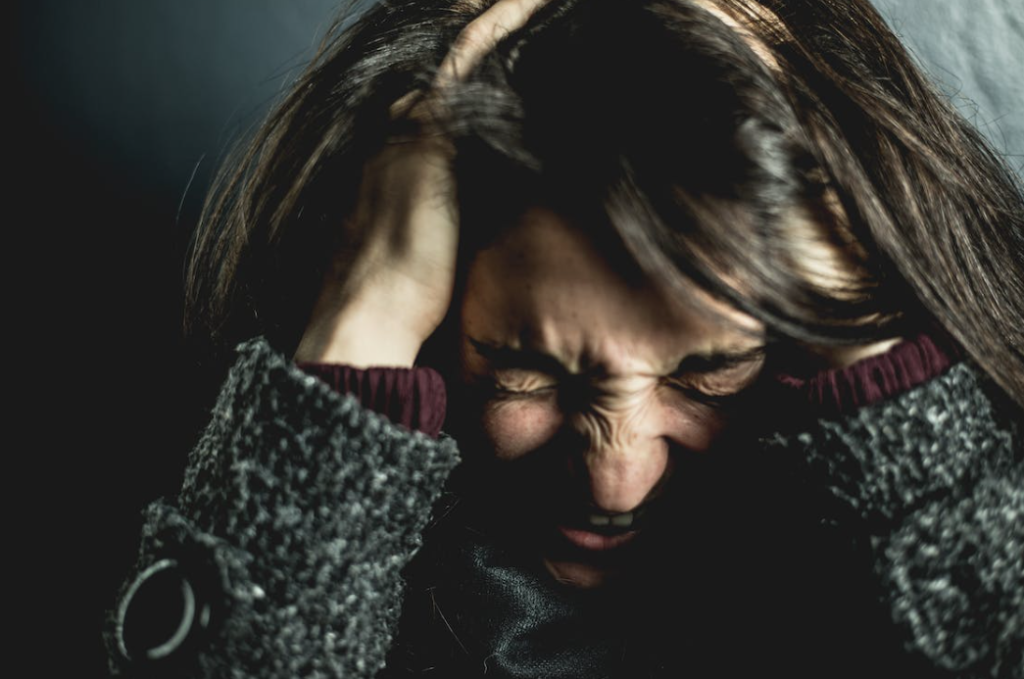Are Mental Health Problems Increasing?
Learn why mental health problems are on the rise and how people’s mental and physical well-being is intertwined.

Selfpause Affirmation App
Download the app to get 1,000’s of affirmation meditations and everything you need to write, record and listen to your own.
Even though a large percentage of people in the United States are struggling with mental health issues, a large percentage do not seek help. This is because of a variety of reasons. These include social status, gender, education, and country of birth. These factors determine the individual’s access to resources and power, and can also influence the likelihood of receiving mental healthcare. The consequences of unmet needs are significant, resulting in the escalation of mental health conditions.
According to the SS, nearly 800,000 people in the United States experienced serious distress and did not receive treatment. This figure is much higher among Latinos than other ethnic groups, with half of Latinos reporting unmet needs. Similarly, three out of five Asians who reported moderate or serious distress did not receive the services they needed. The study also found that citizenship is a significant barrier to seeking care. Of noncitizens, seven out of 10 reported that they did not receive the services they needed. And of naturalized citizens, four out of five were not able to access care.
Moreover, studies have shown that there are differences in the perceived need for mental health care across gender, education level, and country of birth. Men enrolled in secondary education were less likely to perceive a need for mental healthcare, while those with university education had a higher level of awareness of their condition and increased care use.
Impact of the COVID-19 pandemic on mental health

A recent global burden of disease study estimates that the COVID-19 pandemic will lead to an increase in cases of major depressive disorders and anxiety disorders by as much as 28%. However, the findings are subject to considerable methodological heterogeneity and cannot be used to draw any conclusions about the long-term effects of the pandemic on mental health. The data used in this study also reflect a large variation in the prevalence of anxiety and depression in the population, which is not surprising given the wide variability in the prevalence of these disorders.
During the COVID-19 pandemic, adults with poor general health were significantly more likely to report signs of anxiety or depression than those in better health. This is not surprising, given that people with chronic diseases are at a higher risk for mental ill health.
COVID-19 has also had an impact on children’s and young people’s mental health. According to UNICEF, one in seven children worldwide experienced lockdowns, which disrupted daily routines. This resulted in a significant loss of education and anger for many children. A significant number of young people reported feeling scared about the outbreak, and several of them reported feelings of depression and anxiety.
The prevalence of COVID-19-related hospitalization is still unknown, but the most common neuropsychiatric symptom is delirium, which affects one-third of COVID-19 patients and 50% of patients who require intensive care unit admission. A study conducted by the US Veterans Affairs found that COVID-19-infected people have a 64-per-1,000-person risk of experiencing a COVID-19-triggered mental disorder. This study also found that a stepped-care approach is effective in the monitoring of patients’ cognitive and mental health problems. In addition, milder symptoms may benefit from counseling or holistic care while moderate to severe symptoms should be treated with guideline-concordant care.
Impact of social media on mental health

Recent research has found that teens’ use of social media has a direct impact on their mental health. A study published in 2015 found that feedback seeking and social comparison were linked to depressive symptoms. Moreover, a study from 2013 found a correlation between passive and active social media use and life satisfaction. Passive social media use includes browsing other people’s photos, while active social media use involves interacting with others and posting content.
Excessive social media use is often driven by a fear of missing out on a certain social event or activity. In addition, excessive use can disrupt sleep. Using social media at night can stimulate the brain, making it difficult to fall asleep. Researchers have also found a connection between the amount of time spent on social media and symptoms of anxiety and depression.
Researchers at the University of Pennsylvania have discovered that high social media use is linked to feelings of loneliness. To combat loneliness, individuals should limit their time online and make a conscious effort to engage with other people. Face-to-face contact improves mood and reduces stress, which are essential for maintaining mental health. However, some people find it difficult to make this connection and instead rely on social media for social support.
Social media can have particularly distressing effects on marginalized groups. The use of online communities like Twitter and Facebook is associated with repeated violence against communities of color. In this case, social media can serve as a conduit for the collective grief and trauma experienced by members of the minority community.
Effects of depression

Although most of us think of depression as an emotional illness, it can also affect our physical health. It is characterized by low mood and persistent sadness. It may be caused by grief or a temporary response to a traumatic event, but it may also be a sign of a more serious condition. Depression affects a person’s mood, behavior, and ability to focus. It can also impair their work and social lives.
Depression can affect any age, but it usually starts in adulthood. Despite this, it is now recognized that children and adolescents may also be afflicted with depression. Some symptoms include persistent sadness, irritability, and guilt. Anxiety may also be a symptom of depression.
Major life events such as divorce, death, or illness may overwhelm a person’s coping mechanisms, triggering depression. The brain changes associated with depression can affect anyone, regardless of age, gender, or race. People with low self-esteem may be more prone to the symptoms of depression than those with higher self-esteem.
Depression can also cause physical symptoms, including chronic body aches, sleep disorders, and memory problems. It can even cause a person to lose control of their daily activities and may lead them to use substances to cope. If left untreated, depression can result in serious consequences, such as heart attack and stroke. Studies show that people with major depression are more likely to make poor healthcare decisions and fail to follow doctors’ orders. They also have a higher risk of dying within the first few months after a heart attack.
Effects of anxiety on physical health

Anxiety is a serious condition that affects our physical health in many ways. It affects our cardiovascular, digestive, and respiratory systems and can even increase our risk of infection. This article outlines some of the most common effects of anxiety and what you can do about them. Anxiety causes the release of stress hormones such as adrenaline, which are associated with high blood pressure and heart disease.
High levels of anxiety are linked to digestive problems, including irritable bowel syndrome and functional dyspepsia. This is due to the hypersensitivity of the nerves that regulate our digestive system. This can cause a variety of problems, including diarrhea and constipation. In addition, anxiety triggers the flight-or-fight stress response, which increases the heart rate and pulse, preparing our brain for an intense situation. In addition, the immune system can experience a brief boost during times of high anxiety, but it will typically return to normal after a while.
Other common physical effects of anxiety include poor immunity. Research suggests that the fight-or-flight response in people with anxiety can cause their immune systems to malfunction. This is one of the many reasons that addressing your anxiety is so important. Not only will it improve your physical health, it will also help you improve your mental and emotional health.
Effects of substance use on mental health

Substance abuse has negative effects on a person’s mental health. Studies have shown that people who abuse alcohol or drugs are more likely to experience depressive symptoms. This is a sign that the substance is altering brain chemistry, which can increase depressive symptoms. The substances can also worsen existing conditions, such as depression and anxiety. The effects of substance abuse can last for days, even weeks, and sometimes even months.
Substance abuse also increases the risk of developing mental disorders, and it can trigger symptoms that were previously undiagnosed. Long-term use of alcohol or drugs can change the brain structure, which can lead to serious mental health problems. These changes may lead to a wide variety of other issues, including anxiety, depression, and mania.
The effects of substance use on mental health are especially detrimental to people who already suffer from mental illnesses. These individuals are more likely to use drugs than those with no mental health problems. Alcohol and drugs are often used to deal with painful feelings and conditions, which in turn can worsen the problem. Peer pressure can also be a big contributor to drug use, especially among adolescents. Furthermore, people who grow up in unstable environments and lack parental supervision are more likely to engage in drug and alcohol abuse.
Many substance abusers also experience anxiety related to hiding their behaviors and remorse. This stigma, coupled with the stigma of addiction, can lead to feelings of shame and guilt that affect the addict’s self-image. People who struggle with substance use disorder tend to evaluate themselves negatively on a regular basis. This negative self-talk can lead to feelings of guilt and shame, which can lead to further abuse and problems.
Our Top FAQ's
The prevalence of mental health problems varies widely depending on the specific disorder and the population being studied. In general, the prevalence of mental health problems has been increasing in many countries around the world. This increase may be due to a variety of factors, such as an increase in the number of people seeking help for mental health issues and an increase in the diagnosis of mental health problems.
There are many potential causes for the increase in mental health problems. These may include social and economic factors, such as poverty, unemployment, and social isolation; environmental factors, such as pollution and natural disasters; and biological factors, such as genetics and brain chemistry.
Societal attitudes towards mental health have undergone significant changes in recent years, with more people feeling comfortable seeking help for mental health issues and less stigma attached to these problems. This shift in attitudes may have contributed to an increase in the prevalence of mental health problems, as more people feel able to seek help when they need it.
The relationship between social media and technology use and mental health is complex and not fully understood. Some research suggests that excessive use of social media and technology may contribute to the development of mental health problems, while other research suggests that these tools can be used in a positive way to support mental health.
There are many strategies for addressing and decreasing the prevalence of mental health problems, both on an individual and societal level. These strategies may include increasing access to mental health care, promoting mental health literacy, and implementing policies and programs that support mental health and well-being.
